Regulation, market fragmentation and new types of risk have catalyzed change in the financial services industry over the last few years. Automation and standardization has changed the way customers interact with market infrastructure providers, leading to an explosion in data volumes. Storage costs have dropped significantly, which has opened up opportunities to leverage big data to create new products and serve customers better.
In addition, the arms race for lower latency has given way to the drive toward more deterministic speed.
Perhaps even more remarkable is the staggering pace of innovation in technology. Looking forward to 2017, a few trends and emerging technologies will likely converge, leading to a fundamental change in the way we do business.
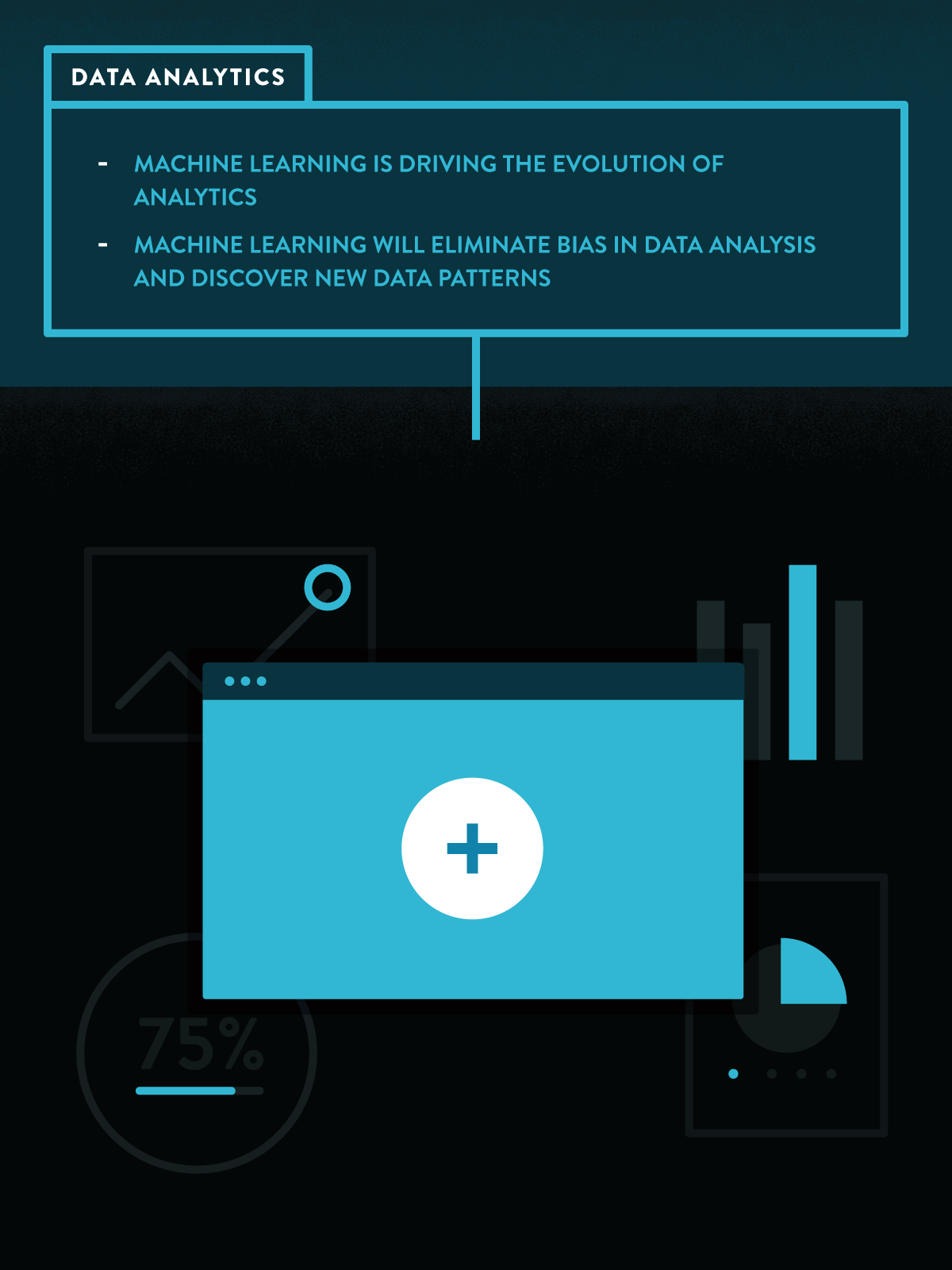
Being able to mine data, normalize it, update analytics in real time and present it in a consolidated view is a source of competitive advantage. Until now systems were rules-based, but we are now seeing a seismic change in the approach which will progressively shift toward using machine learning and artificial intelligence to eliminate bias in the analysis and discover new patterns in the data.
Market infrastructure providers will try to take advantage of unconventional datasets including text, pictures and natural language processing (NLP) and monetize new datasets faster. Cloud technology, which is being widely adopted globally, will make it cost effective to store and process data.
Data scientists will be highly sought after in the industry. These professionals have advanced skills in math (especially statistics), programming and databases, machine learning, communications, visualization as well as domain knowledge.
Nasdaq is already leveraging technology to harness market intelligence through visualization and data enhancement both for our own marketplaces and for our technology customers. By extracting data from multiple sources and putting it into interactive dashboards, we have a real-time understanding of events. With these capabilities, we can proactively develop new offerings to support our customers. In the year ahead, we will look to deploy predictive and prescriptive capabilities, so we can glean new insights and identify revenue generating opportunities.
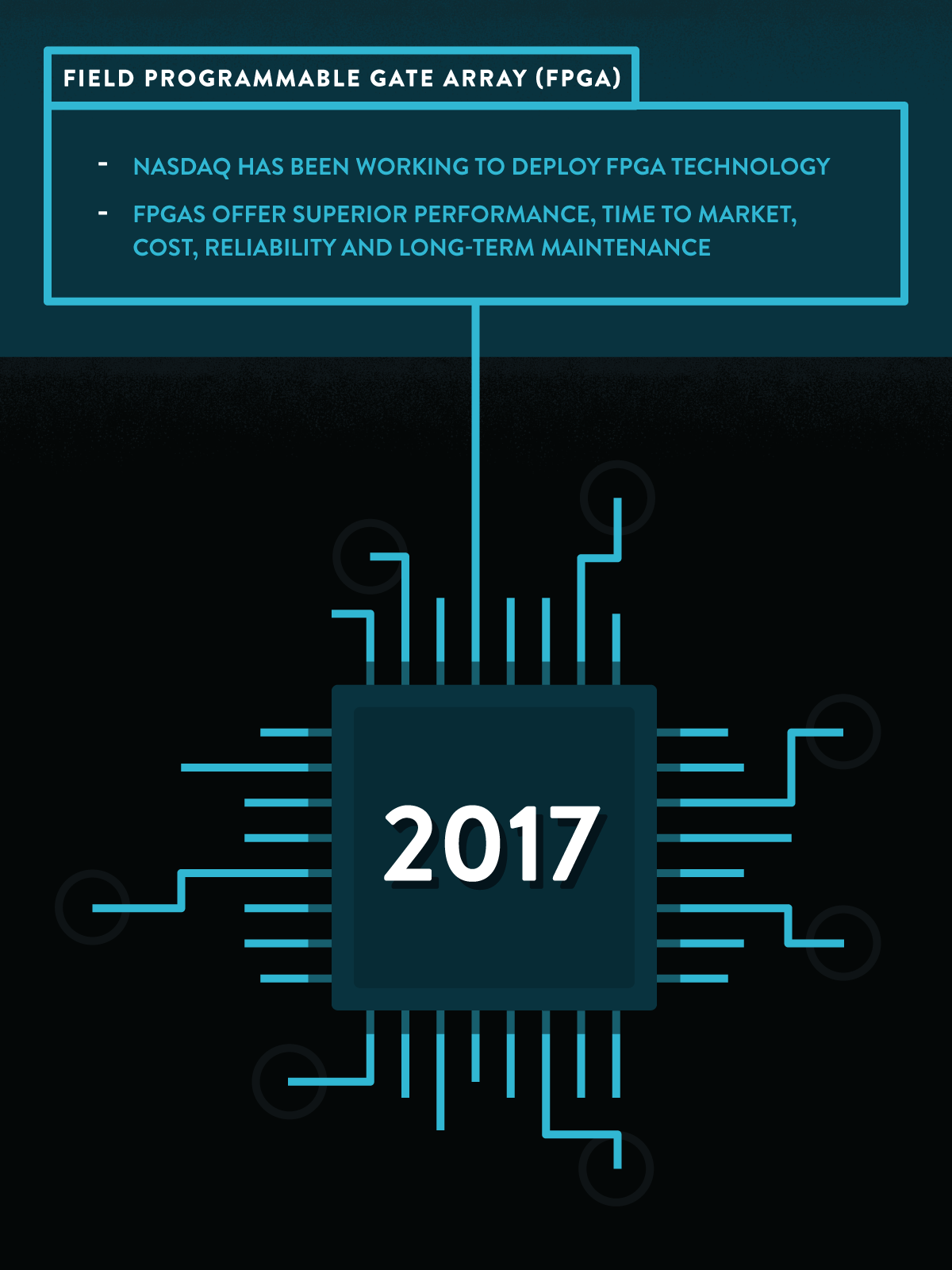
Software runs on top of operating systems, which makes it possible to multitask. The operating system slices up the operations into small chunks that are not perceivable to the user and then executes them on that computer. In ultra-low latency environments such as stock markets, multitasking creates inherent jitter in the performance.
With FPGA, software is embedded on hardware to allow a much more deterministic speed. Computers can be dedicated to one task or execute one set of code very well. The fact that FPGAs are re-programmable makes them extremely flexible. For example, a particular application can be run on Day 1, and a different application can be run on Day 2.
Having a chip customized by a manufacturer is a powerful technology to have, though FPGA is also a very compelling proposition. The key advantages of FPGA are performance, time to market, cost, reliability and long-term maintenance. Nasdaq has been working to deploy this technology for about five years, and we expect to expand our implementation in 2017.
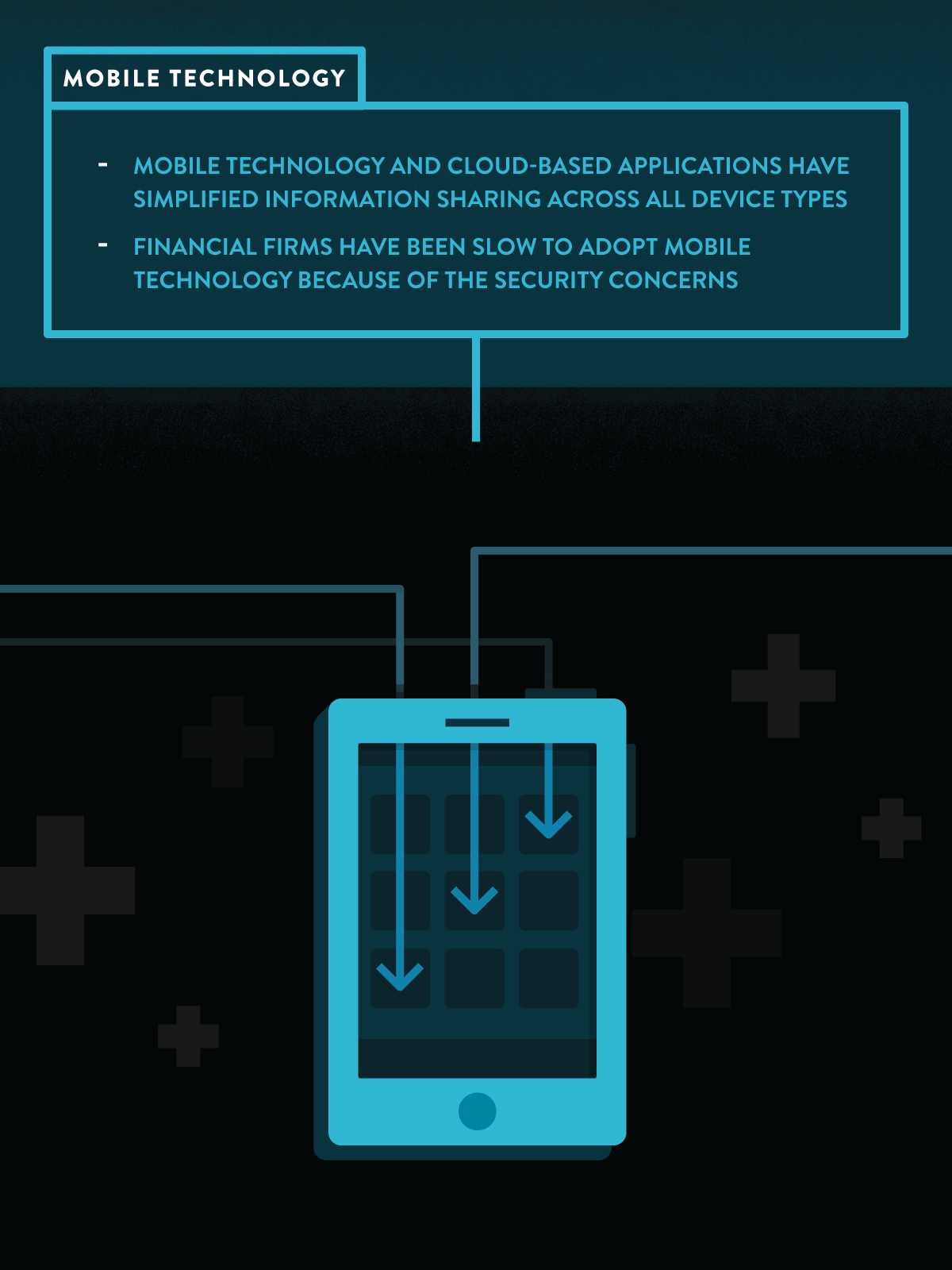
The proliferation of mobile technology – from smartphones to tablets and iPads – has fundamentally changed consumer behavior. Consumers are increasingly buying goods and services on their mobile devices, which is having a significant impact on brick and mortar stores. In our industry, investors enjoy access to the financial markets from anywhere.
Advancements in mobile technology have also changed the way business people collaborate and access information. A new generation of cloud based applications has simplified information sharing and that can be used across all device types. Nasdaq offers similar but highly secure applications, Directors Desk and Boardvantage, specifically designed for board members to collaborate and share files containing sensitive information. In addition, we have combined mobile technology with other technologies – particularly cloud and blockchain – to enable remote proxy voting.
To some extent, financial firms have been laggards in adopting mobile technology because of the security concerns, but addressing those will drive increased penetration. During 2017, Nasdaq plans to work toward the goal of making most of our product portfolio available on mobile devices.

Cloud providers are generating billions of dollars in revenue, and growth is accelerating rapidly. Nasdaq has already built a new investor relations portal and established an entire infrastructure supporting our data sandbox in the cloud.
Having FPGA come into the cloud, this increases our interest even more on whether we can operate our markets in the cloud. Cloud providers are taking security seriously, and we anticipate that the financial cloud will soon be more secure than most traditional on-ground data centers. That would potentially allow us to make sensitive information more broadly available than on traditional, centralized databases.
Admittedly, some roadblocks stand in the way of actually running exchanges in the cloud. Cloud providers guarantee bandwidth, but they do not guarantee the latency or performance of front office applications. Exchanges need to comply with rules and regulations on fair and equal access to the match, so moving front office applications to the cloud necessitates some technology changes. Moreover, certain technologies that are prevalent in Nasdaq's systems, such as multicast, are not supported well in the cloud. We are working with several public cloud providers to solve these issues. Running middle office and back office applications in the cloud is more straightforward, but in 2017 we will continue work to address the remaining security concerns regarding data separation and customer access to data.
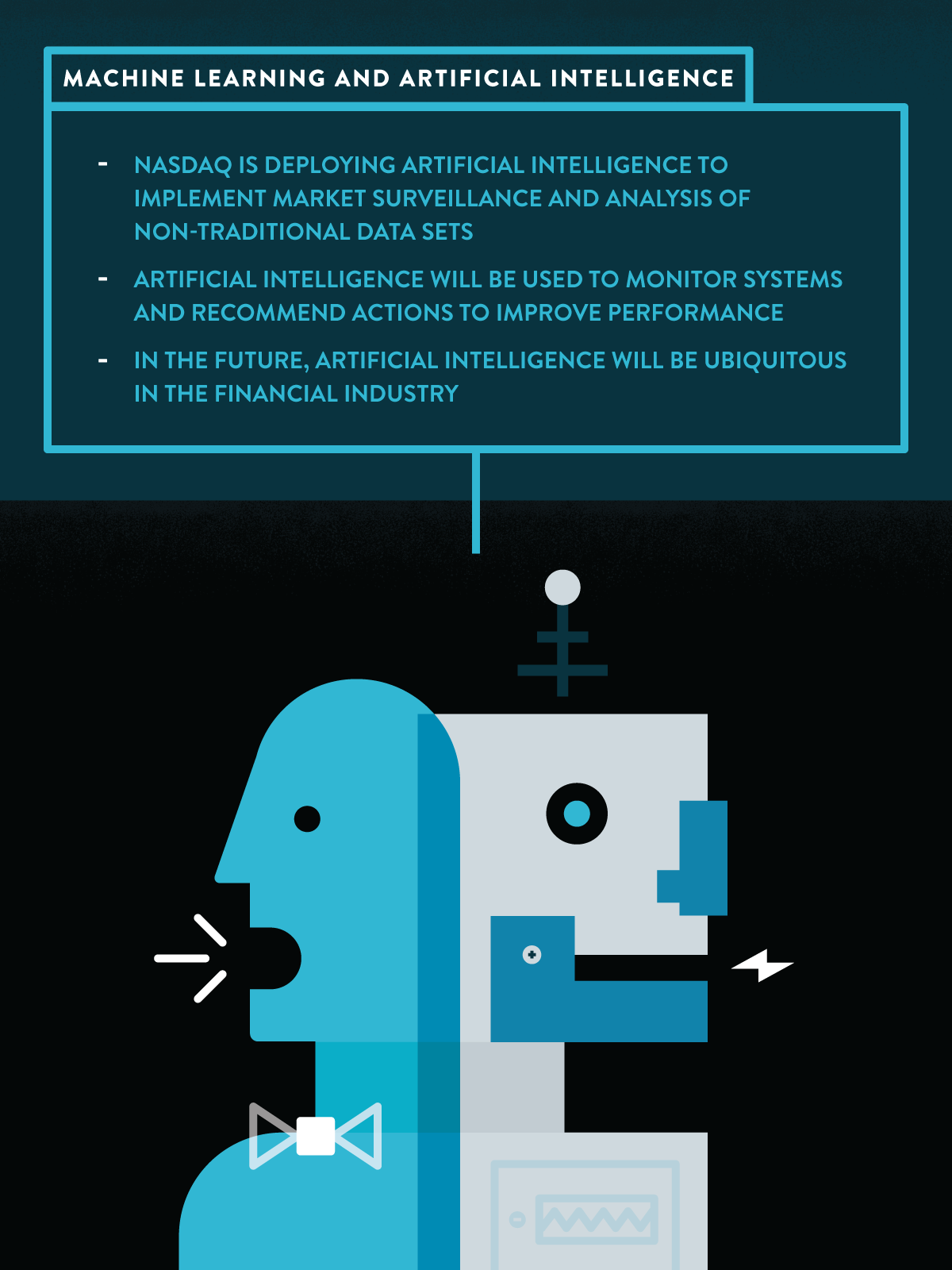
Today there is a vast amount of data available, and computing technology has matured to the extent where we can gain significant insight from it. In the not too distant future, artificial intelligence will become ubiquitous in the financial industry. From a technical and a business perspective, it will be used to tie together different inputs so market infrastructure providers can react much more dynamically and learn from experience.
Machine learning and artificial intelligence will cross cut almost everything that Nasdaq does, and it will be applicable across the board – from helping customers to trade through to market surveillance. We are bringing in non-traditional data sets including email and text messaging, sentiment and macroeconomics data, and even log files from different systems, and mining them for insights. The technology will be used to calculate and generate indices and exchange traded funds. It will also be integrated into matching engines so it can make certain decisions.
Artificial intelligence will be used to monitor systems and recommend actions to improve performance. Today a static alarm goes off when there is a problem. Tomorrow, machines will learn from these events, and be able to classify problems and solve them.
Nasdaq is already deploying this technology for 360 degree holistic market surveillance. Unstructured data from electronic communications such as emails, instant messages and social media are tied to traditional surveillance data such as orders, cancels and amendments. This provides a complete view of individual traders' communications including who they corresponded with internally and externally across every communications channel.
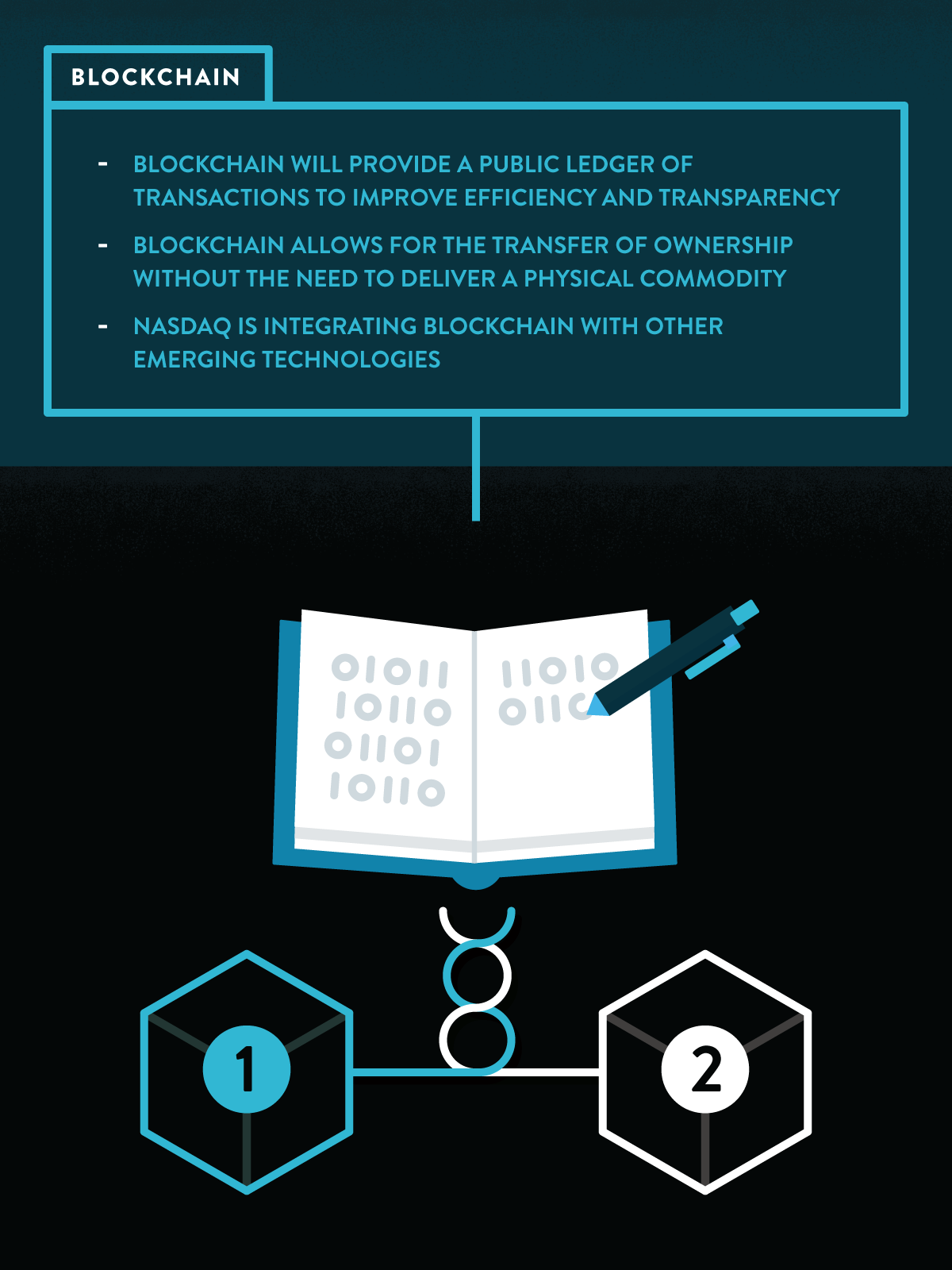
Blockchain has great potential across the financial services industry, particularly in the post-trade environment. As an immutable record of ownership, it could create greater efficiency and transparency in position-keeping and reconciliation. For cashsettled securities, it could accelerate the clearing and settlement time frame to T+0, significantly reducing risk in the system. Collateral could be moved around quickly and easily. On the settlement side, blockchain could enable several services including managing payments and cash, transferring securities, facilitating collateral and tri-party arrangements, and securities lending.
In the OTC markets, blockchain could decrease risk and increase efficiency and transparency. Since blockchain is ideal for tracking and tracing, it could improve auditing and regulatory reporting.
Another powerful use case is in the futures exchange and clearing space. Negotiable commodity warehouse receipts provide proof of ownership for commodities stored in a warehouse, vault or depository. They allow the transfer of ownership without delivering the physical commodity, and importantly, they are eligible collateral for loans.
Nasdaq's first blockchain initiative was in the OTC private company security market, where heavily negotiated trades, similar to bilateral contracts, are prevalent. In the Nasdaq Private Market (NPM), we are using blockchain to manage cap tables, which can be complex as private companies raise rounds of financing, issue equity and arrange all the special terms and rights in the process. We have developed Nasdaq Linq, an end-to-end workflow tool, and we have a layer on top of our NPM transaction processing system that enables participants to trade and transfer securities and related funds through blockchain. As we gain more experience with the technology, we have several areas where we are creating working proofs of concepts that get closer to public market trading environment.
Interoperability between different instances of the blockchain is critical to wider adoption, so that is an area we will focus on in the coming months. A blockchain service is built inside of the core of our new Nasdaq Financial Framework, so users can get acquainted with the technology. Finally, from an architecture perspective, we will continue to run proof of concepts involving the integration of blockchain and other emerging technologies.
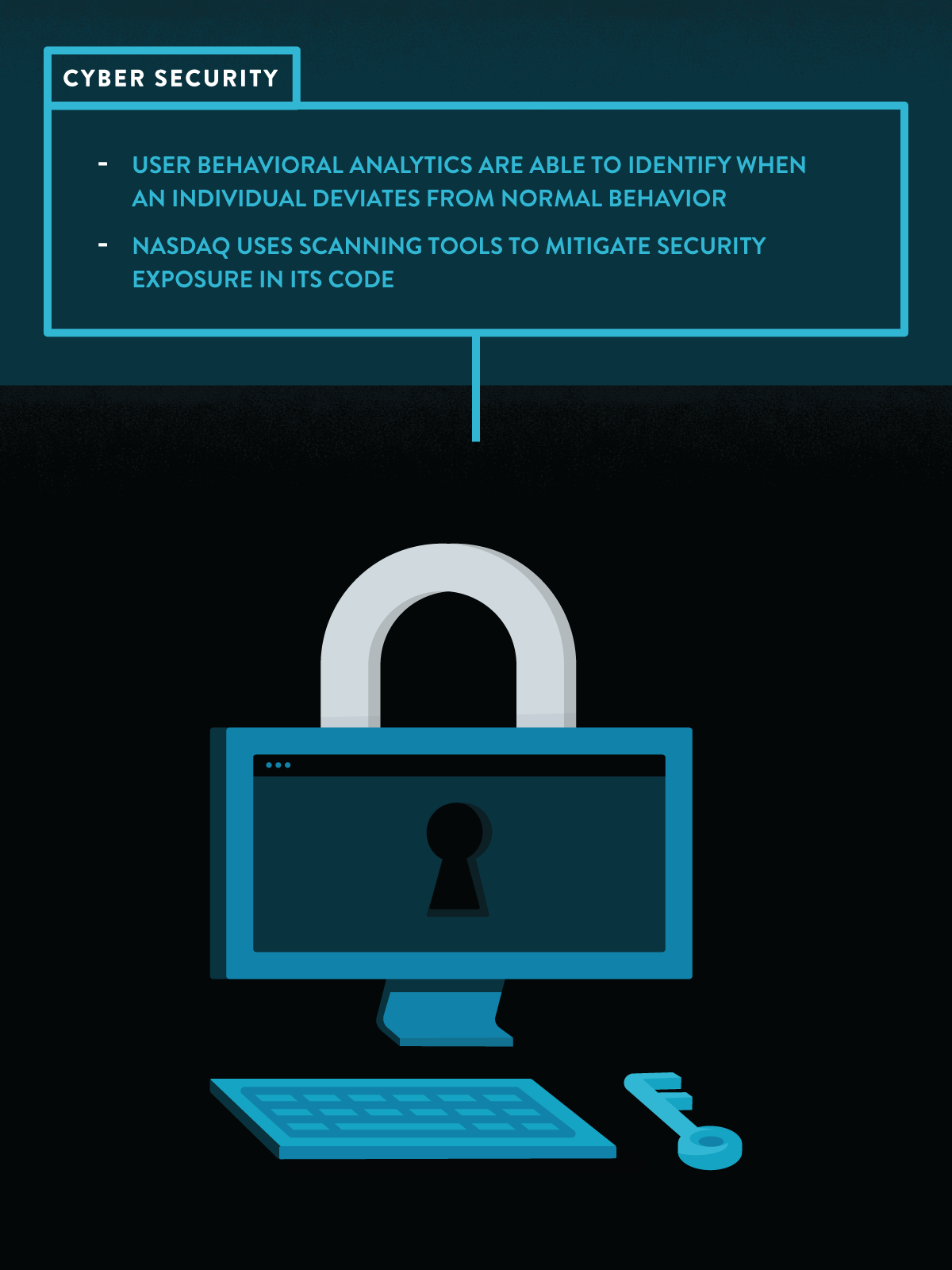
More information is being shared than ever before, and global regulators have become increasingly concerned about cyber security risk. As expectations are still being defined, the onus is on firms and their boards to ensure their environment is protected.
Nasdaq implements an array of tools, processes, and policies to prevent, detect, and respond to attacks and ultimately to mitigate risk. Artificial intelligence is being used to sift through mounds of log files and data points to detect actionable items and false positives within the environment. User Behavioral Analytics (UBA) tools provide insight into how users interact within the environment and highlight when individuals deviate from their normal behavior. Other tools help us to understand and act quickly to mitigate threats - centralizing and contextualizing threat information. Code scanning tools are deployed in various stages of the product development lifecycle to ensure that code does not contain any security vulnerabilities.
Innovation is occurring to simplify multifactor authentication – where an individual uses a password to log in along with a numerical code generated from a hardware or software token. Fingerprinting, voice recognition, retinal scans and wearables ("biometrics") are increasingly being used for authentication. From an architecture perspective, Nasdaq has built our mobile applications such that they integrate with security frameworks that support different authentication mechanisms and true multifactor authentication – something you "know" and something you "have".
While tools can be deployed in the environment – it is also paramount to not ignore the human factor and instilling a culture of security within an organization. Breaches often occur because basic security hygiene is lacking, so employees need to be educated to handle their password and other credentials prudently. Nasdaq will continue to conduct "red teaming" exercises – where ethical hackers monitor employees' cyber hygiene and look for vulnerabilities.
Check out BUSINESS.NASDAQ.COM/TECH to learn more

